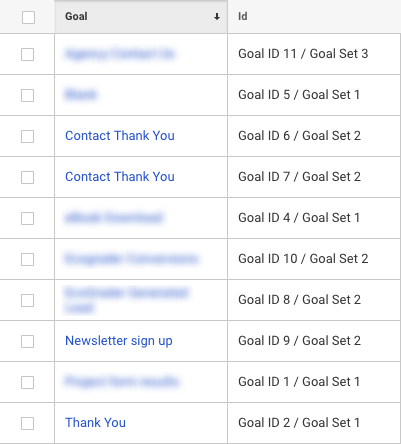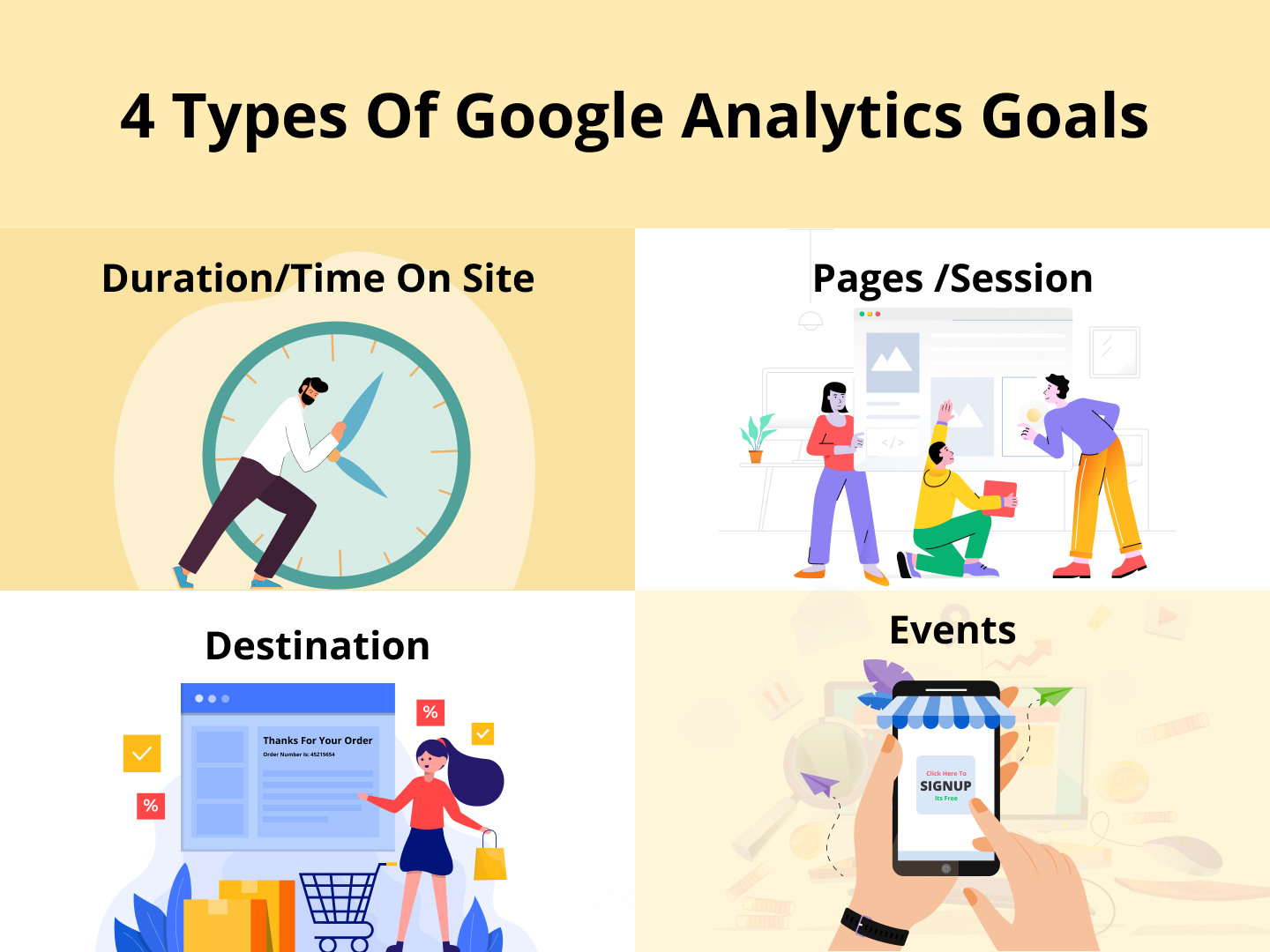Comprehensive Checklist of What Data Is Google Analytics Goals Unable to Track
Comprehensive Checklist of What Data Is Google Analytics Goals Unable to Track
Blog Article
Demystifying Google Analytics Limitations: Discover What Data Goals Can not Track
In the world of digital analytics, Google Analytics stands as an effective tool that offers valuable insights into site efficiency and user behavior. From the intricacies of customer communication with vibrant content to the complexities of cross-device customer trips, these limitations lost light on locations that may stay covered from typical analytics point of views.

Individual Interaction With Dynamic Material
Individual interaction with dynamic content plays a crucial duty in understanding individual habits on web sites and maximizing the overall customer experience. Dynamic material refers to components on a webpage that can change without the need for a full page reload. This includes interactive elements such as pop-ups, sliders, forms, and video clips that reply to user actions in real-time. By tracking user communications with vibrant material, web site proprietors can gain useful understandings into individual interaction, preferences, and habits.
Google Analytics offers different devices to track user interactions with vibrant material, such as event monitoring and virtual pageviews. Event monitoring allows you to monitor particular individual activities, like clicking a button or viewing a video, giving information on just how individuals interact with dynamic elements. Online pageviews can be made use of to track interactions that do not result in a new page load, providing an extensive sight of individual involvement with dynamic content. By assessing this information, site owners can make informed decisions to enhance user experience and drive conversions.
Cross-Device User Journeys
Just how can modern analytics tools track the complicated courses individuals take across multiple gadgets in their on the internet trips? Cross-device customer journeys provide a substantial challenge for monitoring and evaluating customer actions accurately. As customers interact with apps or sites making use of different tools such as desktop computers, smart devices, and tablets, it becomes essential to comprehend exactly how they move in between these platforms to optimize customer experience effectively.
Google Analytics deals with limitations in tracking cross-device user journeys as a result of personal privacy worries and technical constraints - what data is google analytics goals unable to track. While it can offer insights right into private tools' interactions, tracking a seamless user journey throughout numerous tools continues to be a challenge. This limitation can lead to insufficient information and fragmented user insights, making it challenging for businesses to create a unified sight of the customer trip
To resolve this problem, companies can make use of sophisticated analytics tools that offer cross-device tracking abilities, enabling them to gain an extra holistic understanding of customer actions. By leveraging these devices, companies can bridge the space in tracking cross-device individual journeys and maximize their digital techniques for a seamless customer experience.
Offline Conversions and Acknowledgment
As businesses browse the challenges of tracking cross-device customer journeys, another essential element to take into consideration is the world of offline conversions and acknowledgment in the realm of data analytics. While Google Analytics gives valuable understandings into online customer habits, it fails when it comes to tracking conversions that happen offline. This restriction positions a significant difficulty for organizations that have both online and offline sales networks.
Offline conversions, such as purchases made in physical stores or through phone over here call facilities, are important to comprehending the full consumer journey. Without the ability to connect these offline conversions to details on-line communications, companies might battle to accurately measure the effect of their electronic marketing initiatives.
To resolve this space, businesses can discover alternative remedies such as incorporating CRM systems with online analytics devices or using special coupon codes that can be traced back to on-line projects. By connecting the space in between online and offline information, services can acquire an extra extensive understanding of their consumers' actions and improve their overall advertising and marketing strategies.
Person Customer Recognition
In the realm of data analytics, the ability to accurately recognize private users across numerous on the internet touchpoints is a critical obstacle for services looking for to customize and enhance their advertising strategies. While Google Analytics supplies valuable insights right into user behavior and interactions, it falls short in making it possible for the identification of certain individuals as a result of personal privacy issues and technological constraints. Google Analytics makes use of distinct identifiers such as cookies to track individual sessions and habits, yet these do not correspond to recognizing private users in a personal feeling.

Information From Secure Pages
In spite of the enhancing frequency of safe web pages on web sites, acquiring information from these encrypted sources provides a special challenge for electronic analytics platforms like Google Analytics. Secure web pages, shown by HTTPS in the link, encrypt data exchanged official website in between the individual's web browser and the web site's server to guarantee personal privacy and protection. While this encryption is essential for securing sensitive information, it likewise positions restrictions for tracking user habits and celebration analytics information.
Google Analytics deals with obstacles in gathering thorough details from secure web pages as a result of the security procedures in position. Consequently, certain data points such as recommendation sources, keyword searches, and even some individual communications may not be fully caught when customers access a web site via a safe and secure link. This constraint can affect the precision and completeness of the information analysis, causing gaps in recognizing individual habits and choices on protected pages.
To navigate this difficulty, electronic analysts might need to explore alternate tracking techniques or take advantage of other tools especially developed to gather insights from safe web pages. By adapting approaches to fit these limitations, services can still derive valuable analytics in spite of the constraints presented by encrypted connections.
Conclusion
In verdict, Google Analytics has restrictions in tracking user interaction with vibrant web content, cross-device customer journeys, offline conversions, individual customer recognition, and data from safe and secure web pages. Regardless of its important understandings, Google Analytics might not supply a full picture of user interaction across numerous touchpoints.
Individual communication with dynamic material plays an essential function in understanding customer behavior on internet sites and optimizing the general customer experience. By tracking customer interactions with vibrant material, site owners can acquire valuable insights into individual interaction, preferences, and behaviors.
Google Analytics utilizes one-of-a-kind identifiers such as cookies to track individual sessions and behavior, but these do not relate to determining individual users in a personal feeling.
As a result, particular information points such as reference resources, keyword searches, and also some user communications might not be totally recorded when users access a site through a secure link.In conclusion, Google Analytics has restrictions in tracking customer communication with vibrant material, cross-device user journeys, offline conversions, private why not find out more user identification, and information from safe and secure web pages.
Report this page